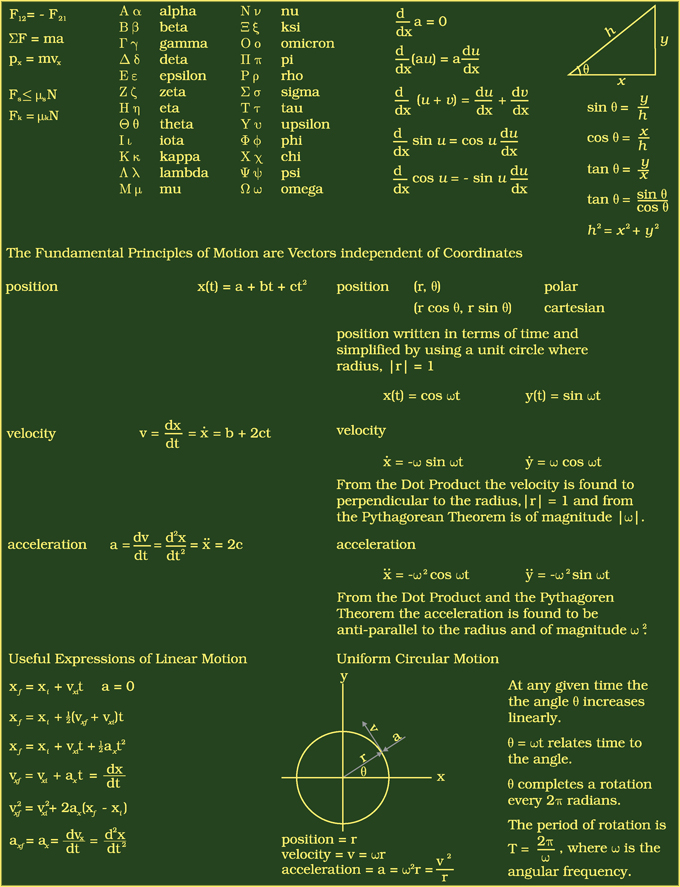Back to the Matter at Hand
Physics Mathematics Chemistryjimw@umich.edu Physics Equations 02.pdf
|
Back to the Matter at Hand
Newton's First Law: p = mvcan be applied to systems which "on the surface" look quite different, but in fact operate in the same manner.Every object will remain at rest or in uniform motion in a straight line unless compelled to change its state by the action of an external force.Newton's Second Law: F = maThe rate of change of momentum, acceleration, produced by a particular force acting on a body is directly proportional to the magnitude of the force, inversely proportional to the mass of the body and in the same direction of the particular force.Newton's Third Law: F12 = - F21To every action there is always opposed an equal reaction; or, the mutual actions of two bodies upon each other are always equal, and directed to contrary parts. "For every action there is an equal and opposite reaction."

Classical Mechanics
A coordinate system labels the location and provides a framework to describe motions driven by the principles that cause the motion. It is found through experimentation that the position of a particle can be completely described by:
x(t) = a + b(t) + c(t2)for any where and any when. The first derivative of the position equations gives the velocity. The second derivative of the position equation gives the acceleration.
These quantities can thus be calculated and also measured resulting in a validation of the theoretical principles of motion. The wildest thing about the validation is that it works out for both linear and circular motion. Motion is governed by the same principles even though the cases appear different in the Physical World.